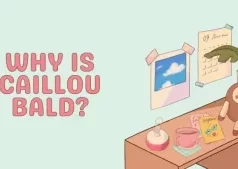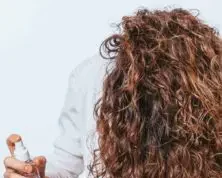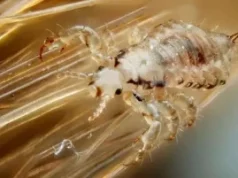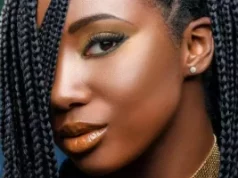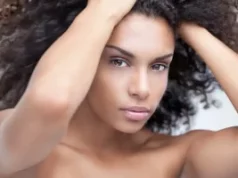Can You Dye Greasy hair? The degree of greasiness plays a significant role in the solution. Extremely greasy hair prevents the dye from dispersing evenly, which results in inconsistent colour payoff.
On the other hand, some professionals choose to colour their hair without washing it first. How do you gauge your hair’s degree of oiliness, exactly? What level of grease is considered ideal?
In this post, we’ll examine if having oily hair enhances dying effects and discuss at-home mane colouring techniques. Let’s get going
Greasy hair is a common hair concern that many people experience. There are various myths and misconceptions surrounding greasy hair, leading to confusion about its causes and effective remedies. In this article, we aim to debunk the greasy hair myth by providing a better understanding of its causes and clarifying the relationship between hair oiliness and hair dye.
Also Read: Best Korean Hair Dye in 2023
Understanding Greasy Hair and Its Causes
Greasy hair, also known as oily hair, is characterized by excessive production of sebum, the natural oil produced by the scalp. Sebum plays a crucial role in maintaining healthy hair and scalp by moisturizing and protecting them. However, an overproduction of sebum can lead to greasy hair.
The primary cause of greasy hair is an overactive sebaceous gland. The sebaceous glands, located near the hair follicles, produce sebum to keep the hair and scalp lubricated. Several factors can contribute to the overproduction of sebum, including:
- Hormonal changes: Hormonal fluctuations, such as those experienced during puberty, pregnancy, or menopause, can stimulate the sebaceous glands and result in greasy hair.
- Genetics: Some individuals may be genetically predisposed to producing more sebum, making them more prone to greasy hair.
- Hygiene habits: Overwashing or excessive use of harsh hair products can strip the scalp of its natural oils, leading to increased sebum production as a compensatory mechanism.
- Diet: Certain dietary factors, such as consuming a high-fat or high-sugar diet, can contribute to greasy hair. However, the impact of diet on sebum production is still a subject of debate among experts.
- Environmental factors: Humidity and hot weather can stimulate the sebaceous glands, causing the hair to become greasier.
The Relationship Between Hair Oiliness and Hair Dye
There is a misconception that hair dye can cause or exacerbate greasy hair. However, hair dye itself does not directly contribute to increased sebum production. Greasy hair is primarily influenced by the factors mentioned earlier, and the use of hair dye does not significantly alter the functioning of the sebaceous glands.
It is essential to differentiate between greasy hair and hair that appears greasy due to hair dye or styling products. Some hair dyes contain oils or moisturizing agents that can leave a residue on the hair, giving it a greasy or oily appearance. Similarly, excessive use of styling products like gels, pomades, or serums can make the hair look greasy.
To maintain a balanced scalp and prevent greasy-looking hair after dyeing, it is crucial to follow proper hair care practices:
- Choose the right hair dye: Opt for hair dyes labeled as “oil-free” or “lightweight” to minimize the chances of residue buildup.
- Wash hair properly: Use a gentle shampoo that suits your hair type and wash your hair regularly to remove excess oils, product buildup, and residue from hair dye.
- Avoid overusing styling products: Limit the use of heavy styling products that can weigh down the hair and make it look greasier.
- Seek professional advice: If you have persistent concerns about greasy hair or the impact of hair dye on your scalp, consult a hairstylist or a dermatologist who can provide personalized recommendations.
Also read : Best Leave-in Conditioner for Low Porosity Hair
Understanding Greasy Hair and Its Causes
Understanding Greasy Hair and Its Causes
Greasy hair, also known as oily hair, occurs when the sebaceous glands produce an excessive amount of sebum, the natural oil that moisturizes and protects the hair and scalp. Several factors contribute to greasy hair:
- Hormonal factors: Hormonal fluctuations during puberty, pregnancy, or menopause can stimulate the sebaceous glands, leading to greasy hair.
- Genetic predisposition: Some individuals may have genetically overactive sebaceous glands, making them more prone to greasy hair.
- Hygiene habits: Overwashing the hair or using harsh shampoos can strip the scalp of its natural oils, causing the sebaceous glands to produce more sebum as a compensatory mechanism.
- Diet: Although the impact of diet on sebum production is not fully understood, consuming a high-fat or high-sugar diet may contribute to greasy hair in some individuals.
- Environmental factors: Humidity and hot weather can stimulate the sebaceous glands, resulting in greasier hair.
Can You Dye Greasy Hair? Experts Weigh In
Dyeing greasy hair is possible, but it’s important to approach the process with caution. Experts generally recommend addressing the underlying causes of greasiness before dyeing the hair. Here are a few considerations:
- Pre-treat the hair: Prior to dyeing, it is advisable to wash and thoroughly cleanse the hair to remove excess oil and buildup. Use a clarifying shampoo or a gentle cleanser to eliminate any residue that might interfere with the dyeing process.
- Choose the right dye: Opt for a hair dye specifically formulated for oily hair or one that provides oil control benefits. These dyes often contain ingredients that can help absorb excess oil and minimize the greasy appearance.
- Avoid conditioning before dyeing: Skip applying conditioner to the roots or scalp before dyeing, as it can make the hair look even greasier. Instead, focus on conditioning the ends of the hair to maintain moisture balance.
- Follow dyeing instructions: Always follow the instructions provided with the hair dye. Apply the dye evenly, avoiding excessive saturation on the roots, where the greasiness is more noticeable. Rinse the dye thoroughly after the recommended processing time.
Tips for Dyeing Greasy Hair Successfully
- Test the dye on a small section: Perform a patch test before applying the dye to your entire head. This helps ensure you don’t have any adverse reactions to the dye and allows you to assess the results on a small area of hair.
- Opt for professional assistance: If you’re unsure about dyeing greasy hair yourself, it’s best to seek professional help from a hairstylist. They can assess your hair condition, recommend suitable products, and provide expert guidance throughout the process.
- Post-dyeing care: After dyeing your hair, continue to follow a proper hair care routine to maintain the color and manage greasiness. Use shampoos and conditioners designed for oily hair types and avoid excessive use of heavy styling products that can weigh down the hair.
- Address underlying causes: To manage greasy hair in the long term, address the underlying factors contributing to excessive sebum production. This may involve adjusting your diet, adopting better hygiene practices, and considering hormonal or genetic factors with the help of a healthcare professional.
it is possible to dye greasy hair by taking the necessary precautions. However, it is important to address the underlying causes of greasiness and follow proper hair care practices to achieve successful and long-lasting results. Consulting with a hairstylist or dermatologist can provide personalized advice and recommendations based on your specific needs.
DIY vs. Salon: Which Option Works Best for Greasy Hair?
DIY vs. Salon: Which Option Works Best for Greasy Hair?
When it comes to dyeing greasy hair, both DIY and salon options have their pros and cons. Here’s a comparison to help you make an informed decision:
DIY Dyeing:
Pros:
- Cost-effective: DIY hair dyeing is generally more budget-friendly than visiting a salon.
- Convenience: You have the flexibility to dye your hair at home, saving time and effort.
- Privacy: Some individuals prefer the privacy of their own space when dealing with hair-related concerns.
Cons:
- Lack of expertise: DIY dyeing may lack the professional knowledge and skills of a hairstylist, which could result in uneven color or undesirable outcomes.
- Limited access to specialized products: DIY options might have fewer options for products specifically designed for greasy hair, making it more challenging to address the underlying issue.
- Risk of damage: Without professional guidance, there’s a higher risk of damaging your hair or scalp during the dyeing process.
Salon Dyeing:
Pros:
- Expertise and guidance: Hairstylists are trained professionals who can assess your hair condition, recommend suitable products, and provide personalized advice for dyeing greasy hair.
- Specialized products: Salons often have access to a wider range of professional products that can help address the greasiness while dyeing your hair.
- Quality results: With a hairstylist’s expertise, you’re more likely to achieve the desired color and a professionally done finish.
Cons:
- Higher cost: Salon services can be more expensive than DIY options, especially for frequent touch-ups or color maintenance.
- Scheduling constraints: Visiting a salon requires setting an appointment and adhering to their availability, which may not always be convenient for everyone.
- Lack of privacy: Some individuals may prefer to have control over the dyeing process and avoid the social aspects of a salon environment.
Ultimately, the choice between DIY and salon dyeing depends on your personal preferences, budget, and the complexity of the dyeing process you desire. If you’re unsure or inexperienced, seeking professional help from a hairstylist is generally recommended for the best results and hair care.
Also Read: How long does Pascal pink hair dye last?
Post-Dyeing Care for Greasy Hair
After dyeing greasy hair, it’s important to follow proper post-dyeing care to maintain the color and manage the greasiness effectively. Consider the following tips:
- Use gentle, clarifying shampoos: Opt for shampoos specifically designed for oily or greasy hair. These products can help cleanse the scalp and hair without stripping away essential oils.
- Limit washing frequency: While it’s important to maintain scalp cleanliness, avoid excessive washing, as it can trigger more sebum production. Aim to wash your hair every other day or as needed.
- Condition the ends only: Apply conditioner to the mid-lengths and ends of the hair, avoiding the roots. This helps prevent excess oiliness at the scalp while keeping the hair moisturized.
- Avoid heavy styling products: Heavy styling products like gels, pomades, or serums can contribute to greasiness. Minimize their use or opt for lightweight alternatives to avoid weighing down the hair.
- Consider dry shampoo: Dry shampoo can help absorb excess oil between washes. However, use it sparingly and follow the instructions to prevent buildup or scalp irritation.
- Seek professional advice: If you’re experiencing persistent greasiness or have concerns about post-dyeing care, consult a hairstylist or dermatologist. They can provide personalized recommendations based on your hair type and specific needs.
Conclusion
Dyeing greasy hair is possible with the right approach and care. Whether you choose the DIY or salon option, addressing the underlying causes of greasiness and following proper post-dyeing care are crucial for maintaining healthy, vibrant hair. Consider your preferences, expertise, and budget when deciding on the best option for your specific needs. If you have concerns, consult a professional for personalized advice and recommendations.
FAQs
Can hair dye make greasy hair worse?
Hair dye itself does not make hair greasier. However, some dyes may contain oils or moisturizing agents that can leave a residue on the hair, making it appear greasy. It’s important to choose hair dyes labeled as “oil-free” or “lightweight” to minimize the chances of residue buildup.
Will dyeing greasy hair damage it?
Dyeing greasy hair, when done correctly and with proper precautions, should not cause damage. However, it’s important to address the underlying causes of greasiness and follow proper hair care practices to maintain the health of your hair.
How often should I wash my greasy hair after dyeing?
The frequency of washing greasy hair after dyeing may vary depending on individual factors. Generally, aim to wash your hair every other day or as needed to maintain scalp cleanliness without triggering excessive sebum production. Follow the guidance of your hairstylist or dermatologist for personalized recommendations.
Can diet affect greasy hair?
Diet may play a role in greasy hair for some individuals, but the impact is still a subject of debate. While consuming a high-fat or high-sugar diet might contribute to greasiness in some cases, it’s important to consider other factors such as genetics, hormones, and hygiene habits as well. Adopting a balanced diet and maintaining good hair care practices are generally beneficial for overall hair health.

